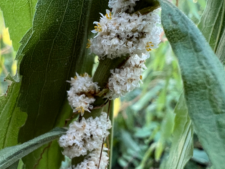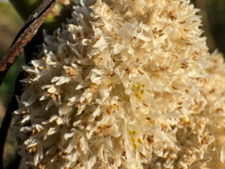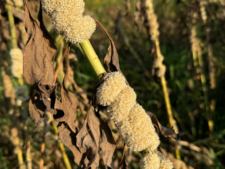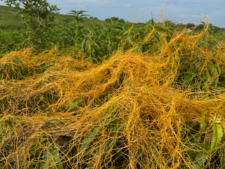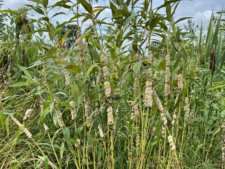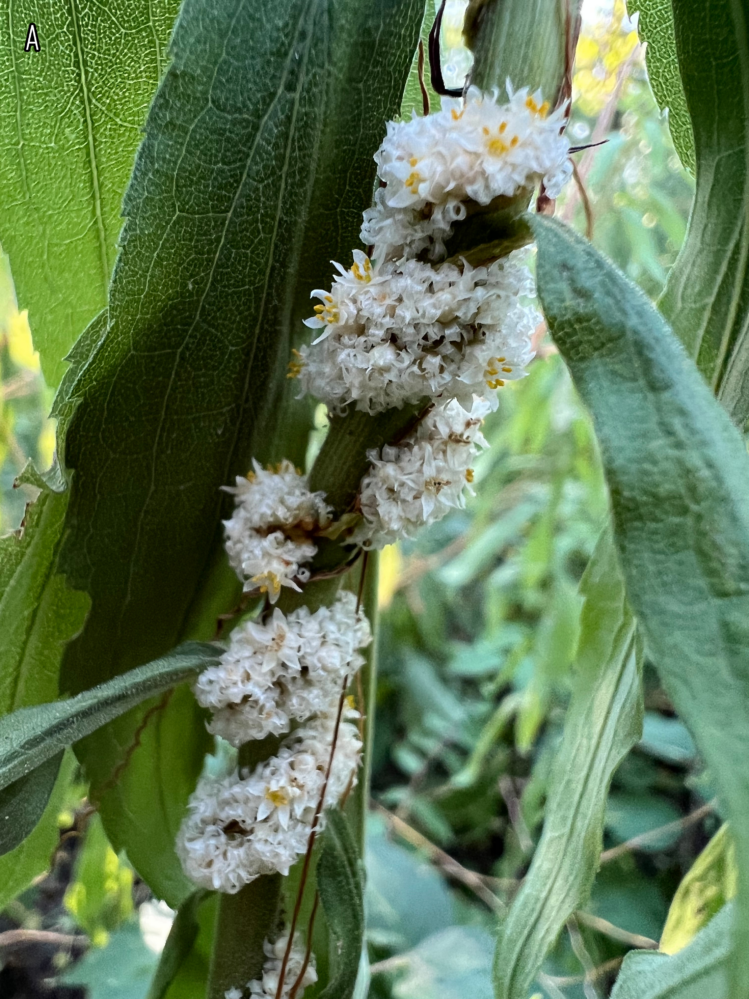
ROPE DODDER
Cuscuta glomerata
MORNING-GLORY FAMILY (Convolvuaceae)
 Identification
Identification
- Flowering July-September
- Uncommon in oak woodlands and floodplains
- Orange or yellow twining stems
- Clusters of small sessile flowers
- Leaves unapparent, very small and scale-like
This parasitic, twining annual herb covers other low vegetation (C,D,E), most often Asteraceae family species such as sunflowers and goldenrod. Identification to species of dodder is difficult and often requires close examination of the shape of the petals, number of petals, habitat, and the type of host plant. Clusters of very small white sessile (stalkless) flowers (A, B,C) bloom in summer from July through September. Leaves are very small and are often described as scale-like.
This plant starts to grow from roots, which wither away when the stems (D) attach to host plants and draw their nourishment from them using structures called haustoria.
Rope dodder occurs mainly in moist, partly shaded areas such as oak woodland edges and floodplains. At Fontenelle Forest, it can most often be found in association with Helianthus (sunflower) species in oak woodlands near the floodplain.
Rope dodder is one of the easier to identify dodder species as the flowers are in sessile, dense rope like masses, whereas other dodder species in Nebraska do not form rope-like masses.
All photos courtesy of Drew Granville, taken at Fontenelle Forest and Niobrara Valley Preserve.

